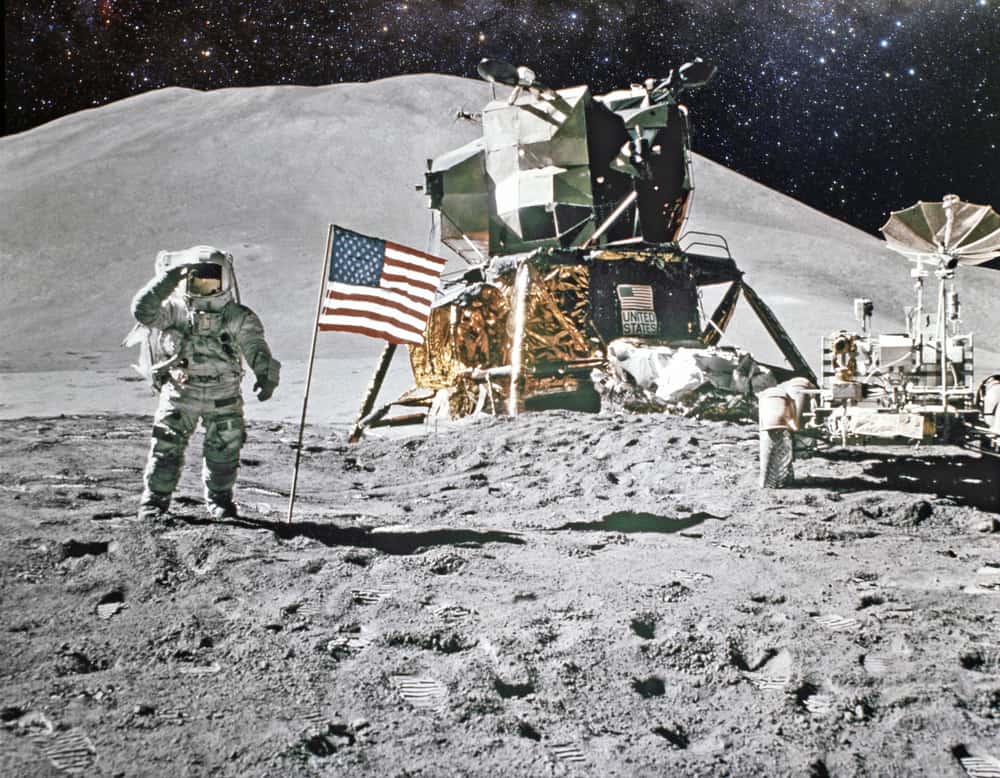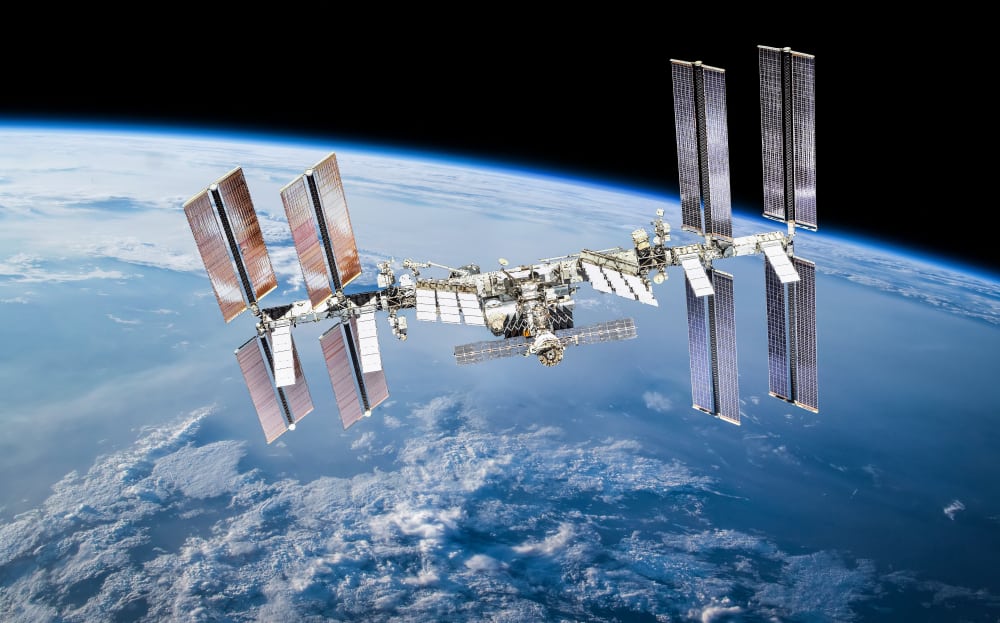In 2017, NASA announced the Artemis Program, a mission to send astronauts back to the moon. The announcement was the organization’s attempt to revive the past excitement around space exploration. What was the result?
Companies and countries worldwide are building some of the most powerful rockets ever.
NASA’s announcement proceeds a long and storied history of space exploration. From lunar achievements to explosive catastrophes, no organization is more synonymous with studying the stars. Continue reading for everything you need to know about the history of NASA.
The History of NASA: What to Know
The National Aeronautics and Space Administration (NASA) is a government agency in the United States that focuses on space exploration. Founded in 1958, it works to develop the tools and equipment needed for scientific research. These include launch vehicles, radio satellites, materials, and more.
NASA’s headquarters is located in Washington, D.C. and has affiliations with research centers in Maryland, California, Texas, and Virginia. The organization employs nearly 18,000 government agents and has an annual budget of about $24 billion.
NASA has seen several accomplishments in its 64 years of service. Among these include:
- The first man on the moon (Neal Armstrong)
- The world’s largest rocket (Saturn V)
- The largest space telescope (Hubble Space Telescope)
- The most successful reusable spacecraft (Space Shuttle)
Since the end of the Space Shuttle program in 2011, not much has come out of NASA. However, the organization hopes to reignite passions for space exploration in the coming years.
With the launch of a new space telescope, the construction of their next super-heavy rocket, and the announcement of the Artemis Program, NASA is making big moves.

A rocket must obtain thrust from a rocket engine in order to launch.
The Founding of NASA: How it Happened?
In 1957, the United States and the USSR found themselves 10 years into the Cold War. Tensions were high to prove the geopolitical dominance between the two superpower countries when the USSR launched Sputnik, the world’s first satellite, into orbit.
This was a major victory for the communist regime, but the United States wasn’t ready to accept defeat. Within months, members of the National Advisory Committee for Aeronautics came together to form NASA, with all resources pivoting toward spaceflight. The organization was officially established in July 1958.
The organization made quick progress and launched its own satellite (Pioneer I) that same year. By 1961, it was the United State’s turn to make a move. On May 25, President John F. Kennedy made a declaration that the US would not only launch missiles into space but that it would send a man to the moon. The world’s first space race had begun.
NASA Through the Decades
1958-1969: We Choose the Moon

NASA has seen some incredible years in its time, but none were as exciting as its beginning. In a little over a decade, the organization sent humans in geocentric orbit, built the most powerful rocket in history and launched a team of three astronauts to the moon. This decade cemented the United States’ dominance in spaceflight over the USSR.
1970-1979: Space Transportation
Following the massive success of the Apollo missions, which ended in 1972, the United States continued to pursue human space missions. There was support for NASA to establish a space station in orbit, allowing for ongoing research. Testing began for efficient transportation methods, including the first signs of reusable space parts.
1980-1989: Space Shuttles and Telescopes
Efforts in the 70s resulted in the Space Shuttle program, a series of fully reusable spacecraft that would carry personnel and materials into orbit. While the program saw tragedy in 1986 with the loss of the Challenger and its crew, the spacecraft enabled the first laboratory tests in space.
The 1980s also saw the development of the Hubble Space Telescope, the first optical telescope in geocentric (around the earth) orbit. With an 8-foot diameter primary mirror and an ability to read ultraviolet waves, the telescope could look far into the history of our universe.
The Hubble launched on a Space Shuttle mission at the start of the next decade.
1990-1999: International Space Station

With space transportation underway with the Space Shuttle program, the United States teamed up with Russia at the end of the USSR to build the International Space Station (ISS). The joint project took an entire decade to build and was the primary focus of the United States.
The station launched in parts from several locations worldwide and was assembled in space near the turn of the century.
2000-2009: A Decade of Troubleshooting
The 2000s were quiet times for NASA; with the ISS completed, most of the organization’s efforts went into research and supplies. But NASA might have wished for the rest of the decade to be quiet.
In 2003, the Space Shuttle Columbia disintegrated, killing seven astronauts. After the disaster, the program was suspended in 2003 and ultimately retired in 2011.
The United States would effectively stop launching manned missions, but it didn’t stop them from exciting the public. In 2004, NASA sent two rovers, the Spirit and Opportunity, to the surface of Mars for exploration. The rovers returned a plethora of exciting discoveries, including signs of water, space rocks, and incredible photos of the planet’s surface.
2010-Today: Mars and Beyond
Interest pivoted from the Space Shuttle to interplanetary colonization; the private spaceflight company SpaceX started developing reusable space parts and innovative launch technology.
With the price of spaceflight dropping considerably and several private companies contributing to progress, NASA officially announced the Artemis Program, a reignition of the United State’s manned missions and the ultimate goal of sending humans to Mars.
What are the most important inventions from NASA
One of NASA’s guiding principles is that its innovations will have practical use for US citizens. So while the organization is renowned for historic space launches, its most important inventions have been used in more than just spaceflight.
Automatic implantable cardioverter defibrillator
Originally designed to monitor astronauts’ heart activity in training and space, the automatic implantable cardioverter-defibrillator (AICD) found lifesaving uses in the healthcare industry.
The device prevents arrhythmia in people with abnormal heart rhythms. This drastically reduces the chance of recurring heart attacks in survivors.
Enriched baby formula
NASA scientists discovered microalgae that could benefit a life-support system during long-distance space travel. Microalgae became the prominent ingredient in nutritional supplements and provided exclusive ingredients previously only found in human breast milk.
The research from this nutritional enrichment has made a difference in healthy development in babies.
Portable Breathing Systems
The research on manned space flight in the 1960s resulted in lightweight breathing equipment such as facemasks, harnesses, and tanks. NASA used this research to improve the old systems used by firefighters. The updated systems allowed for greater mobility and line of sight, as well as sophisticated warnings and alerts.
How Does NASA Make Money?
Because NASA is a government agency, it does not receive money for products or services sold. Instead, it receives a portion of the annual federal budget.
In years past, NASA had a considerable budget. In 1966, the government agency received nearly 5% of all federal spending for the development of the Apollo program. Since then, their budget dropped substantially; In 2020, NASA only received 0.48%. For an organization that has developed incredible life-saving technology, it seems that NASA can do a lot with very little.
NASA Notable Controversies
The Value of the Space Shuttle
Despite its contributions to American society, NASA has not always achieved what it promised. One of the major failures of the spaceflight organization is the hefty price tag of the Space Shuttle Program.
Behind flashy wings of a futuristic space bus, NASA spent billions of dollars while promising to drop the cost of space travel with reusable technology. On average, each Space Shuttle launch costs the organization 1.5 billion dollars, while expendable alternatives cost a 10th of the price.
But its failure to drop spending wasn’t the biggest implication; the Space Shuttle program saw two catastrophic failures in its lifetime, with two vehicle explosions killing 14 crew members. The losses stained NASA’s reputation and crippled its backing for manned space missions for decades.
NASA’s History of Discrimination
Behind the scenes, the organization’s relations are even more critical. Since its inception, NASA has found ways to exclude diversity.
The organization took 25 years to send its first female astronaut to space, despite several attempts to prove that they were just as capable as male astronauts. Even after Sally Ride was accepted in 1983, NASA tried to send her with 100 tampons for a one-week mission.
Their actions get darker with sexual discrimination. In the 1950s, NASA administrator James Webb was amid high-ranking government officials condoning an anti-LGBT movement. The Lavender Scare was a massive moral panic in which many gay and lesbian government employees were fired, and more were denied roles in federal positions.
Today, these past actions permeate NASA’s new James Webb Space Telescope, which kept its name despite moral dissent within its organization.
NASA Company Specs
| Year founded | 1958 |
| Founders | President Dwight D. Eisenhower |
| Industry | Space and aeronautics |
| Headquarters | Washington, D.C. |
| Key people | Bill Nelson |
| Notable inventions | Water filters, memory foam, breathing systems, automatic defibrillators, insulin pumps |
| Website | https://www.nasa.gov/ |
NASA: Further Reading
With ups and downs, NASA has brought benefits and inspiration to the American people for over 60 years. With the announcement of the Artemis Program, the spaceflight organization attempts to let its past failures go and reignite space exploration in the people’s hearts. For more on what NASA is doing, check out the articles below.
- The James Webb Space Telescope: Complete History, Specs, and More – A deep dive into the most powerful telescope in space.
- SpaceX vs NASA: Are They Different and Do They Work Together? – How do two of the biggest names in space compare?
- The 10 Most Powerful Rockets Ever Built – Here are some of the biggest rockets that NASA has used for its missions.
The 10 Largest Space and Exploration Companies in the World – Check out the companies that NASA uses to build its rockets.
Want to Retire Early? Start Here (Sponsor)
Want retirement to come a few years earlier than you’d planned? Or are you ready to retire now, but want an extra set of eyes on your finances?
Now you can speak with up to 3 financial experts in your area for FREE. By simply clicking here you can begin to match with financial professionals who can help you build your plan to retire early. And the best part? The first conversation with them is free.
Click here to match with up to 3 financial pros who would be excited to help you make financial decisions.
The image featured at the top of this post is ©CrackerClips Stock Media/Shutterstock.com.
